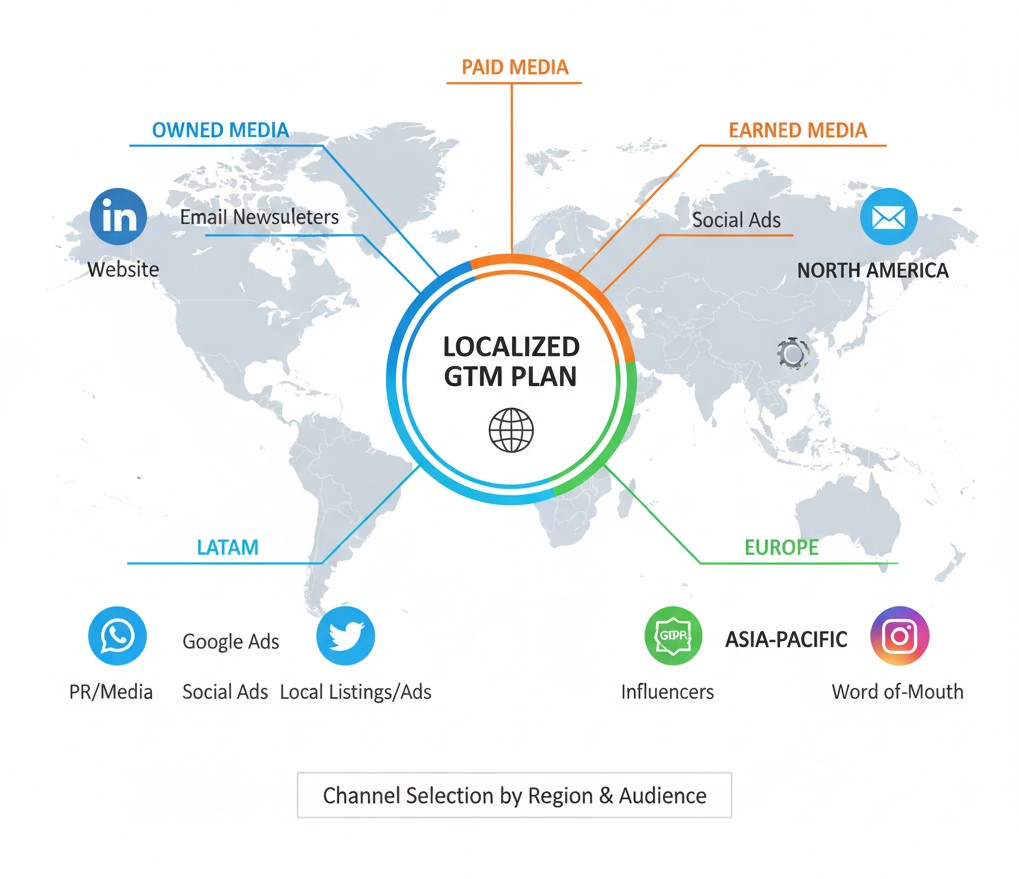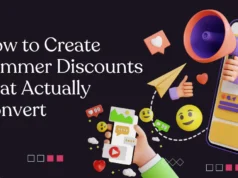Expanding into a new market is both an exciting and challenging endeavor for any business. Whether you’re launching a product internationally, targeting a new customer segment, or entering a previously untapped vertical, your success hinges on one critical element: a well-crafted product marketing strategy.
A strong product marketing strategy not only helps you position your product effectively but also ensures alignment between product development, sales, and customer needs. This is especially vital in a new product launch scenario, where early impressions can make or break your entry.
In this comprehensive guide, we’ll explore how to build a product marketing strategy from scratch specifically tailored for a new market entry, covering everything from research and messaging to channels, enablement, and post-launch optimization.
Step 1: Conduct Market Research
Before you even think about tactics, you need insight. Thorough market research helps you understand your new target audience, the competitive landscape, and local nuances.
a) Know the Market
- Demographics: Who are your customers? Age, income, job roles, location, etc.
- Psychographics: What motivates them? What are their pain points?
- Behavioral Patterns: Where do they shop? What devices do they use? How do they buy?
b) Competitive Analysis
- Who are the major players in the market?
- What messaging and pricing do they use?
- What are their strengths and gaps?
- Where is there a white space for your product?
c) Regulatory Environment
Don’t forget legal considerations. If you’re entering a foreign market, compliance (GDPR, product certifications, import/export laws) matters.
Tip: Use a combination of surveys, interviews, and secondary research tools like Statista, SimilarWeb, and Google Trends.
Step 2: Define Your Positioning & Messaging
Once you know the market landscape, it’s time to position your product in a way that resonates with your new audience.
a) Define Unique Value Proposition (UVP)
Your product marketing strategy should clearly communicate how your product solves a specific problem better than alternatives.
- What problem are you solving?
- Why is your solution better?
- How is your offering different or new?
b) Tailor Messaging to Local Culture
Language, tone, and messaging should be adapted to local expectations. For example, humor that works in one country may fall flat or offend in another.
c) Establish Core Messaging Pillars
Build a messaging framework that guides all content across sales decks, ads, email campaigns, and product pages. Keep it consistent but flexible.
Step 3: Align Product and Marketing Teams
An effective product marketing strategy is built on cross-functional alignment. Product marketing sits at the intersection of product, sales, customer success, and marketing.
a) Get Early Buy-In from Stakeholders
Ensure product managers, sales leaders, and regional marketers are all looped into the plan. Use workshops and collaborative tools to unify the vision.
b) Share Market Research and Personas
Make sure everyone—especially product and sales teams—understands who the customer is and what messaging should be used.
c) Build Feedback Loops
Set up regular syncs or feedback sessions to refine strategy based on what teams are seeing in the field.
Step 4: Create a Localized Go-To-Market (GTM) Plan

A go-to-market strategy is a crucial component of your broader marketing strategy. For a new market entry, it should cover:
a) Channel Strategy
- Owned Channels: Website, blog, email
- Paid Channels: Google Ads, local ad networks, social ads
- Earned Channels: PR, influencer outreach, word-of-mouth
Tailor each channel to the market. Some regions may rely more on messaging apps (e.g., WhatsApp in LATAM), while others prefer email or LinkedIn.
b) Sales Enablement
Equip your sales team with the tools and content they need:
- Localized pitch decks and one-pagers
- Objection handling scripts tailored to market concerns
- Product demo walkthroughs in the local language
c) Content & Campaign Planning
Your messaging should be rolled out across a variety of content types:
- Educational blog posts
- Customer testimonials (from similar regions or industries)
- Landing pages optimized for local SEO
- Webinars, product videos, explainer content
Step 5: Prepare for Product Launch
A new product launch in a new market is your big moment. Your product marketing strategy must support both awareness and conversion.
a) Launch Tiers
- Soft Launch: Roll out to a smaller audience to test messaging and offer.
- Full Launch: Push via all marketing channels and sales campaigns.
b) Launch Tactics
- Pre-Launch Teasers: Build anticipation with sneak peeks or countdowns.
- Influencer Marketing & Outreach: Partner with local influencers to gain trust, visibility, and cultural credibility. Influencer marketing is especially effective in markets where peer recommendations carry more weight than traditional ads. Collaborating with micro or niche influencers can also help you reach highly targeted segments during your new product launch.
- Launch Event or Webinar: Great for B2B products to showcase features and educate.
- Referral or Discount Programs: Incentivize early adoption and advocacy.
c) Customer Support Preparedness
Ensure your support team is ready to handle local language inquiries, time zones, and cultural expectations.
Step 6: Monitor, Measure & Optimize
A product marketing strategy is never static—especially in a new market. Track performance across both leading and lagging indicators.
a) Key Metrics to Track
- Website traffic from target region
- Conversion rates from marketing campaigns
- Cost-per-lead (CPL) and customer acquisition cost (CAC)
- Product engagement (DAU, MAU, feature usage)
- Net Promoter Score (NPS) and reviews
b) Run Post-Mortems
What worked and what didn’t? Use customer interviews, sales feedback, and analytics tools to learn and refine your strategy.
Step 7: Use Early Wins to Build Momentum
Success in a new market compounds quickly—but only if leveraged correctly.
a) Collect Testimonials
Even a few early advocates can serve as social proof. Capture their stories for case studies and sales collateral.
b) Build a Community
Consider starting a Facebook Group, Discord server, or user forum specific to your new market. This increases brand stickiness.
c) Expand with Caution
Use learnings from your first region or segment to expand to similar markets. Don’t rush; make data-informed decisions.
Real-World Example: Slack’s International Growth
When Slack expanded internationally, it didn’t just translate the app—it localized entire workflows and documentation, hired local customer success teams, and adapted onboarding messaging. They even studied how different cultures approach collaboration to tweak product positioning.
This is a perfect example of how a tailored product marketing strategy supports new product launches in unfamiliar markets.
Common Mistakes to Avoid
- Assuming Global Messaging Works Everywhere
→ Always localize your strategy. - Neglecting Local Sales Alignment
→ Sales teams need region-specific tools and training. - Underestimating Cultural Differences
→ Humor, urgency, even color meanings vary by culture. - Rushing Launch Before Readiness
→ Validate with a small test market before a full launch. - Measuring Wrong KPIs
→ Focus on quality metrics, not just vanity metrics like impressions.
Conclusion
Entering a new market is high risk—but potentially high reward. With the right product marketing strategy, you’re setting your company up for long-term success. From research and positioning to launch execution and post-launch optimization, product marketers must orchestrate across functions, geographies, and cultures.
A thoughtful, flexible, data-driven strategy ensures your new product launch doesn’t just make a splash—it creates sustainable demand.
Learn more about: How to Use User-Generated Content to Boost Your Brand Trust









